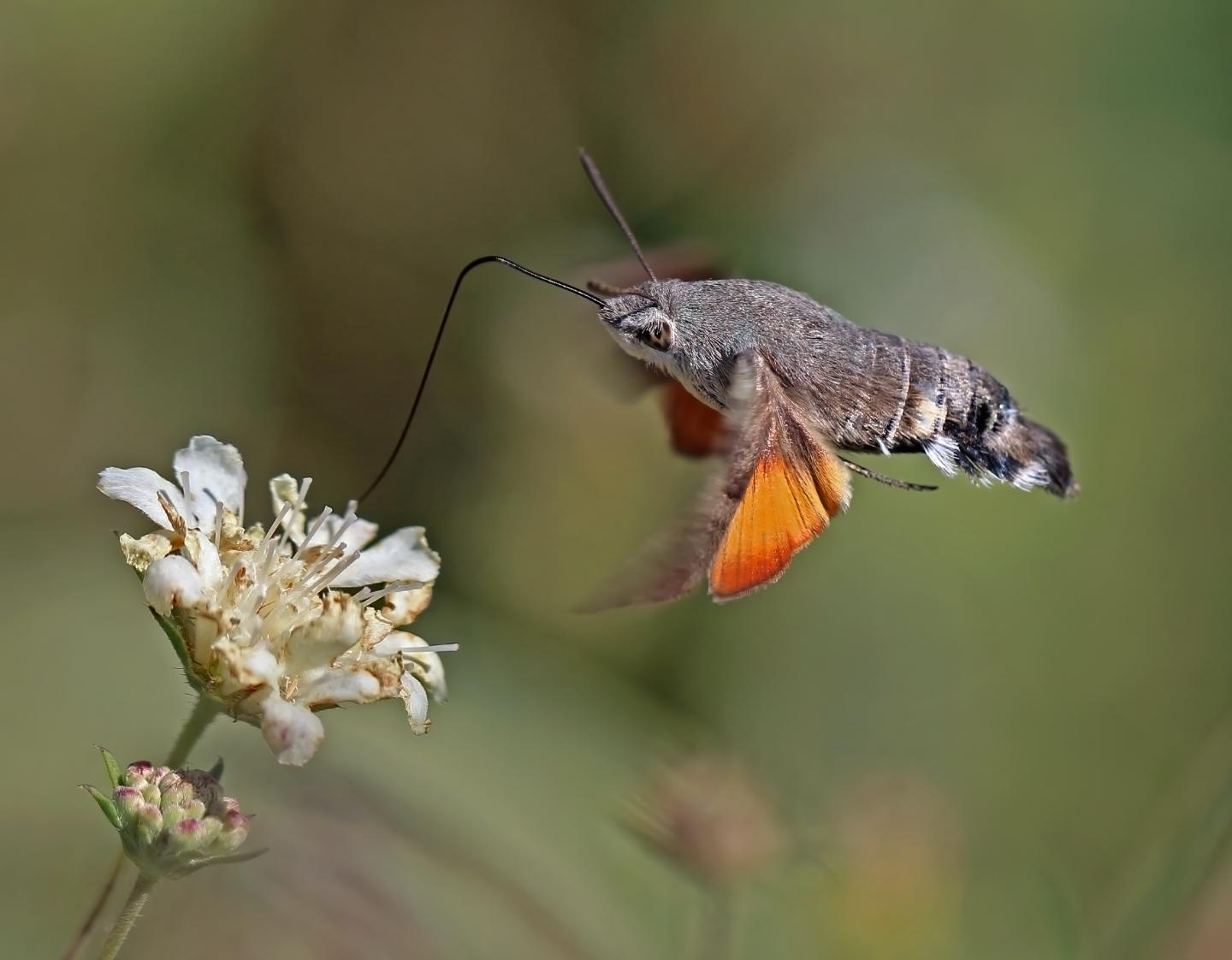Applications could include sensing in robotics and autonomous vehicles

Credit: Charles J. Sharp
EVANSTON, Ill. — All animals great and small live every day in an uncertain world. Whether you are a human being or an insect, you rely on your senses to help you navigate and survive in your world. But what drives this essential sensing?
Unsurprisingly, animals move their sensory organs, such as eyes, ears and noses, while they are searching. Picture a cat swiveling its ears to capture important sounds without needing to move its body. But the precise position and orientation these sense organs take over time during behavior is not intuitive, and current theories do not predict these positions and orientations well.
Now a Northwestern University research team has developed a new theory that can predict the movement of an animal’s sensory organs while searching for something vital to its life.
The researchers applied the theory to four different species which involved three different senses (including vision and smell) and found the theory predicted the observed sensing behavior of each animal. The theory could be used to improve the performance of robots collecting information and possibly applied to the development of autonomous vehicles where response to uncertainty is a major challenge.
“Animals make their living through movement,” said Malcolm A. MacIver, who led the research. “To find food and mates and to identify threats, they need to move. Our theory provides insight into how animals gamble on how much energy to expend to get the useful information they need.”
MacIver is a professor of biomedical and mechanical engineering in Northwestern’s McCormick School of Engineering and a professor of neurobiology (courtesy appointment) in the Weinberg College of Arts and Sciences.
The new theory, called energy-constrained proportional betting provides a unifying explanation for many enigmatic motions of sensory organs that have been previously measured. The algorithm that follows from the theory generates simulated sensory organ movements that show good agreement to actual sensory organ movements from fish, mammals and insects.
The study was published today (Sept. 22) by the journal eLife. The research provides a bridge between the literature on animal movement and energetics and information theory-based approaches to sensing.
MacIver is the corresponding author. Chen Chen, a Ph.D. student in MacIver’s lab, is the first author, and Todd D. Murphey, professor of mechanical engineering at McCormick, is a co-author.
The algorithm shows that animals trade the energetically costly operation of movement to gamble that locations in space will be informative. The amount of energy (ultimately food they need to eat) they are willing to gamble, the researchers show, is proportional to the expected informativeness of those locations.
“While most theories predict how an animal will behave when it largely already knows where something is, ours is a prediction for when the animal knows very little — a situation common in life and critical to survival,” Murphey said.
The study focuses on South American gymnotid electric fish, using data from experiments performed in MacIver’s lab, but also analyzes previously published datasets on the blind eastern American mole, the American cockroach and the hummingbird hawkmoth. The three senses were electrosense (electric fish), vision (moth) and smell (mole and roach).
The theory provides a unified solution to the problem of not spending too much time and energy moving around to sample information, while getting enough information to guide movement during tracking and related exploratory behaviors.
“When you look at a cat’s ears, you’ll often see them swiveling to sample different locations of space,” MacIver said. “This is an example of how animals are constantly positioning their sensory organs to help them absorb information from the environment. It turns out there is a lot going on below the surface in the movement of sense organs like ears and eyes and noses.”
The algorithm is a modified version of one Murphey and MacIver developed five years ago in their bio-inspired robotics work. They took observations of animal search strategies and developed algorithms to have robots mimic those animal strategies. The resulting algorithms gave Murphey and MacIver concrete predictions for how animals might behave when searching for something, leading to the current work.
###
The paper is titled “Tuning movement for sensing in an uncertain world.”
The research was supported by the National Science Foundation (grant IIS-1427419).
Media Contact
Amanda Morris
[email protected]
Original Source
https:/
Related Journal Article
http://dx.





